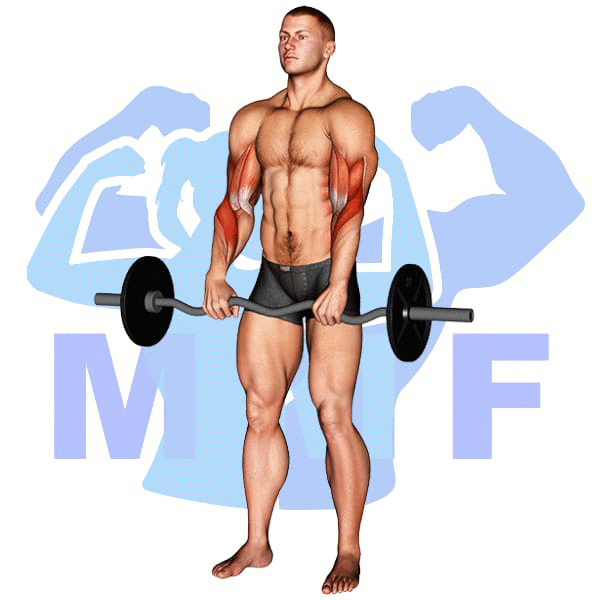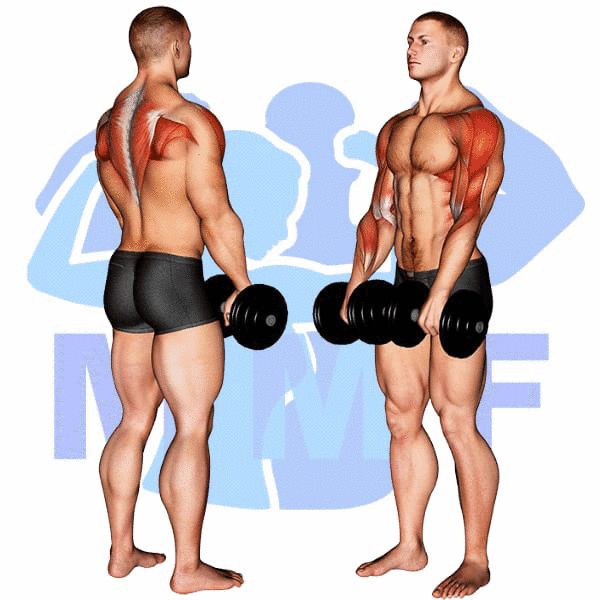Are you struggling to master the rear lunge? You’re not alone! Many people find this exercise challenging, but fear not. With a little practice and some helpful tips, you can perfect your technique and feel confident executing this move. It’s understandable why it’s difficult, our modern lifestyles, predominantly sedentary and sitting, have shortened our hip flexors, and weakened our glutes. These factors make achieving the correct form quite the challenge. However, with the proper modifications and careful attention to form, you will be able to perform effective rear lunges with ease and gain all the benefits of this powerful exercise. In this post, we will provide you with the tools you need to master the rear lunge and achieve your fitness goals.
Rear Lunge Summary
- Primary Muscles: Gluteus Maximus
- Secondary Muscles: Adductor Magnus, Quadriceps, and Soleus
- Equipment: Body Weight
- Mechanics Type: Compound
- Force: Push
- Utility: Auxiliary
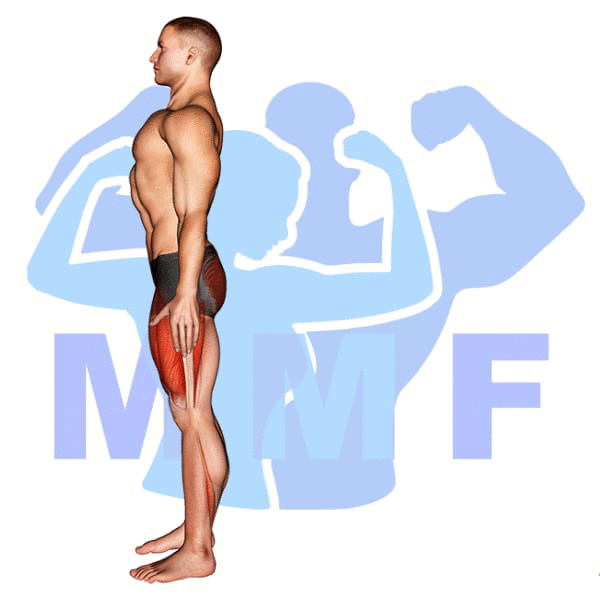
Rear Lunge Instructions
- Start by standing up erect.
- Next, step back onto the ball of your foot with a long stride.
- Then lower your back kneed down towards the ground but don’t let it touch.
- Finally, press up with your back foot and return to the erect position.
- You have finished one rep. Now you can continue on the same leg or alternate your legs for each rep.
Video Tutorial
Rear Lunge Muscles
Target (Agonist)
Synergists
- Adductor Magnus
- Quadriceps
- Soleus
Dynamic Stabilizers
Stabilizers
Antagonist Stabilizers
- None

Benefits of Rear Lunge
The Rear Lunge is an effective exercise for strengthening the Gluteus Maximus, a major muscle in the buttocks. This exercise helps to shape and strengthen the glutes, which can improve posture and reduce low back pain. Additionally, Rear Lunges build strength and stability in the hips and legs, making them a great exercise for athletes who need to develop power and agility. Additionally, Rear Lunges are great for improving balance and coordination, which can help improve performance in sports or everyday activities.
Tips for Performing Rear Lunge
If you’re seeking to take your rear lunge to the next level, then you’re at the right place. Using these suggestions can allow you to maximize the advantages of this amazing workout. Concurrently with strengthening your glutes muscles, increasing movability, and even a lower possibility of injury can all be accomplished with this exercise. Let’s begin and take a look at how these tips will help you.
- Practice proper form: When performing a rear lunge, stand tall with your feet together, then step back with one foot while lowering your body towards the ground. This helps to ensure you are performing the exercise correctly and efficiently.
- Utilize your arms: When performing a rear lunge, use your arms to help keep balance and drive your body forward as you come out of the lunge for maximum power. This helps to engage more muscles and get a better workout.
- Get creative: Rear lunges can be done with different variations such as walking lunges, reverse lunges, and side lunges. Try mixing up your routine by switching up the order and types of lunges to keep your muscles guessing and work different parts of your body.
Benefits and Tips Video
Frequent Mistakes To Avoid
Staying away from errors can be the distinction between a productive training session and an injury when executing rear lunge. Also, in order to maximize the benefits of the exercise, proper technique is required. By preventing these common mistakes, you will improve your ability to achieve the results you want. Not only can preventing these mistakes make you stronger, but it can also assist in you feeling more confident and inspired when at in the gym. So it is time for you to maximize your results from this exercise and experience the benefits of a productive workout.
- Improper Form: Not having the proper form while doing the Rear Lunge can put unnecessary strain on the lower back and knees, and can also lead to injury.
- Not Lowering Enough: Not lowering your body enough during the Rear Lunge will reduce the effectiveness of the exercise and make it less challenging.
- Not Balancing: Not balancing your weight properly between both legs will cause you to not get the most out of the exercise, and can also lead to muscular imbalances.
Find More Bodyweight Exercises Here
Variations and Complementary Exercises
Rear Lunges are an effective exercise for targeting the muscles in the lower body, but that doesn’t mean that you can’t find variations and alternatives to add variety to your workout. Here are some other exercises that you can use to work similar muscles as the Rear Lunge.
Walking Lunge
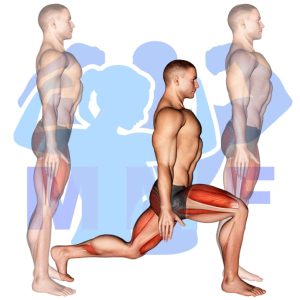
Walking Lunge is a great complementary or alternative exercise to the Rear Lunge. It is a dynamic exercise that will help improve balance, coordination, and core stability, while targeting the same muscles as the Rear Lunge. Walking Lunges can be done with or without weights and can be done either forward or backward, providing a great challenge for the lower body. The movement requires you to step forward with one leg and bend both knees until the back knee almost touches the ground. Once you have reached this position, you should then push off with the front foot and stand up, repeating the movement with the other leg. This dynamic exercise will help build strength and endurance in your legs, glutes, and core.
Lunge

The Lunge is an effective and popular lower body exercise that can be used as a complementary or alternative exercise to the Rear Lunge. It works the same muscles as the Rear Lunge, including the quadriceps, hamstrings, and glutes, but with a different emphasis. The Lunge can be performed in a variety of ways including forward, reverse, lateral, and curtsy variations. It can also be done with bodyweight, dumbbells, kettlebells, or other forms of resistance. Because of its versatility, the Lunge is a great exercise for building strength and stability in the lower body.
Barbell Lateral Lunge

Barbell Lateral Lunge is an excellent complementary or alternative exercise to the Rear Lunge. This exercise works the glutes and quadriceps, as well as the core, while also targeting the hip abductors and adductors. The lateral motion of the Barbell Lateral Lunge puts a greater emphasis on activating the hip abductor and adductor muscles than a Rear Lunge, making it an ideal exercise for strengthening the hips. Additionally, Barbell Lateral Lunge can be done in a unilateral fashion, allowing for greater control and stability in both legs as well as greater range of motion in the hips.
Check Out These Top Bodyweight Exercises
Barbell Rear Lunge

The Barbell Rear Lunge is a great alternative or complementary exercise for the Rear Lunge. It requires a barbell and is performed by taking a large step backwards with one leg while keeping your torso straight and core engaged. When you lunge, make sure that your knee does not go beyond your toes. Once you reach the bottom of the lunge, drive through the heel of your front foot and return to the starting position. This exercise will target all the major muscles in your legs, glutes, and core, making it a great addition to any leg workout.
Barbell Reverse Lunge

The Barbell Reverse Lunge is a great complementary or alternative exercise for the Rear Lunge. It requires you to step backwards while holding a barbell and simultaneously lowering your body towards the ground. This exercise works the same muscles as the Rear Lunge, but the barbell provides additional resistance, making it a more challenging version of the lunge. Additionally, the Barbell Reverse Lunge helps to increase balance and coordination by requiring more control from the stabilizer muscles. This makes it a great alternative to the Rear Lunge for those looking to add more variety to their workout routine.
Barbell Walking Lunge

Barbell Walking Lunge is a great complementary or alternative exercise to Rear Lunge. This exercise is done by holding a barbell in front of your body, with your arms slightly bent, and taking alternating steps forward while simultaneously lowering the body until the back knee almost touches the floor. This exercise works your entire lower body and also provides a great cardiovascular workout. It is a great way to build strength in your legs, hips, and glutes while also improving balance and coordination. Additionally, Barbell Walking Lunges can help you build endurance and help you move more efficiently.
Find More Glutes Exercises Here
Opposing Complementary Exercises
In order to maximize the benefits of the Rear Lunge, it is important to work opposing muscle groups. By working opposing muscles, you can help improve your posture and balance. The following exercises target the opposing muscles of the Rear Lunge and can help you achieve a more balanced workout routine.
Sled Narrow Stance Hack Squat

The Sled Narrow Stance Hack Squat is a great exercise to complement the Rear Lunge. It works the opposing muscle group of the quads, allowing for a balanced workout. This exercise also helps to develop strength and power in the glutes, hamstrings, and core. It also helps to improve balance and stability throughout the body. By alternating between the Rear Lunge and the Sled Narrow Stance Hack Squat, you can target both muscle groups for a complete lower body workout.
Sled Hack Squat
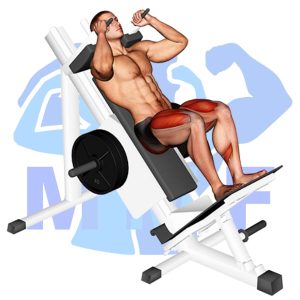
The Sled Hack Squat is a great exercise to complement the Rear Lunge, as it works the opposing muscle group. The Sled Hack Squat primarily targets the quadriceps, glutes and hamstrings, while the Rear Lunge targets the calves and glutes. By doing both exercises together, you can effectively work both the front and back of the legs. The Sled Hack Squat can also be used as a warm up before doing the Rear Lunge, as it helps to activate the muscles needed to perform the lunge correctly. In addition, it helps to improve balance and stability in the lower body. By doing both exercises together, you can ensure that your lower body is optimally conditioned for any activity.
Sled Full Hack Squat

The Sled Full Hack Squat is a great complement to the Rear Lunge exercise. This exercise works the opposite muscle group, targeting the quads, glutes and hamstrings. The Sled Full Hack Squat helps to build strength and power in the legs while providing stability to the core. It also helps to strengthen the muscles in the feet, ankles and calves which are important for balance and coordination when performing the Rear Lunge exercise. Together, these two exercises form a great combination for those looking to build strength and power in their lower body.
Lunging Towards Stronger Glutes
Lunges are a great way to build strong glutes. Specifically, the rear lunge targets the muscles in your buttocks, quadriceps, and hamstrings. When performed correctly, this exercise can help increase your strength, stability, and balance. It’s important to maintain proper form throughout the movement to avoid any strain or injury. Start with a comfortable weight and gradually increase as you progress. Don’t forget to breathe and engage your core muscles for added support. With dedication and consistency, you’ll be lunging towards stronger glutes in no time!
References: Wikipedia | ExRx.net | PubMed.gov | Comprehensive List of Glutes Bodyweight Exercises


